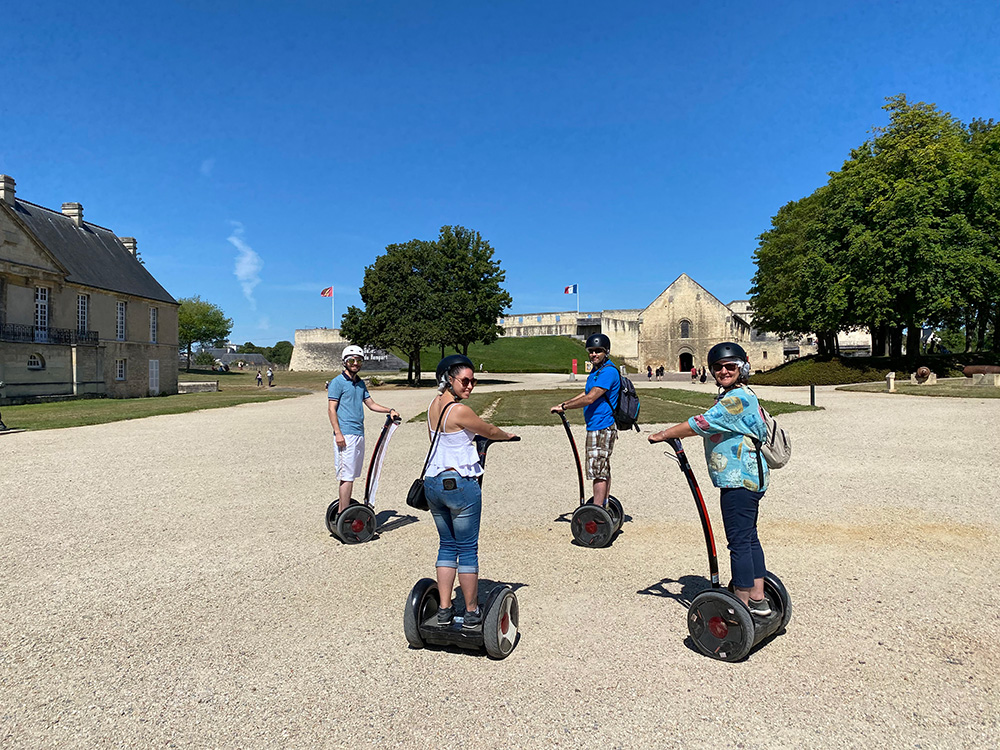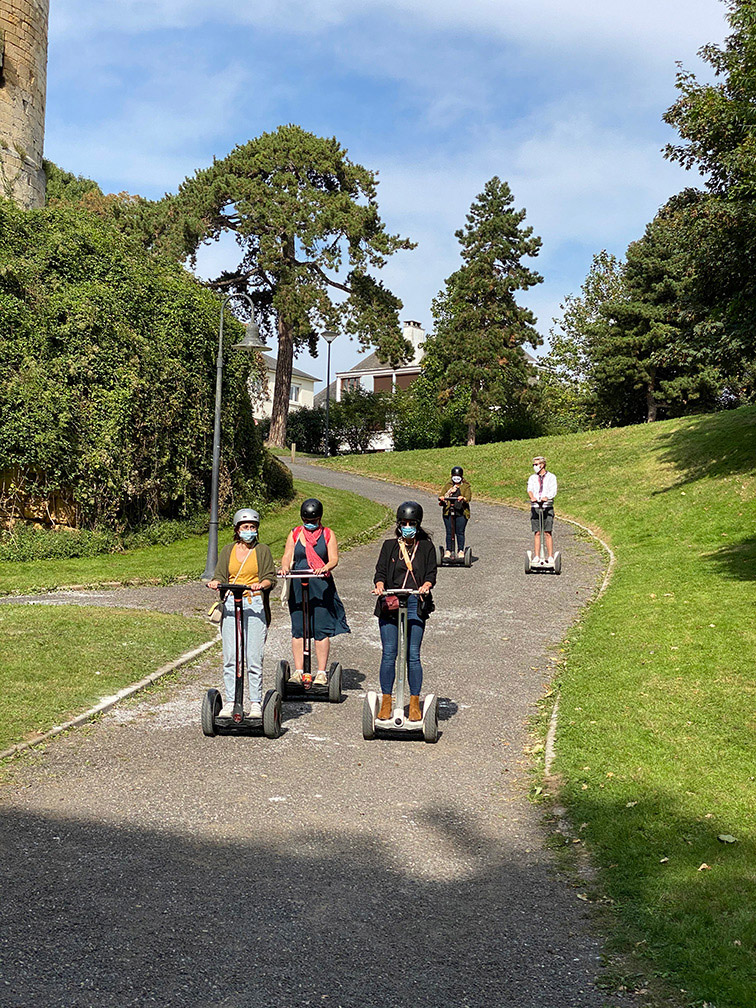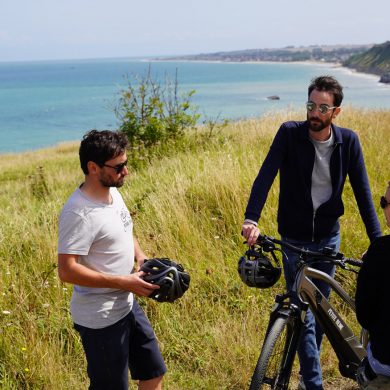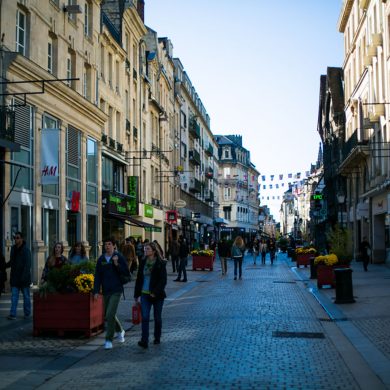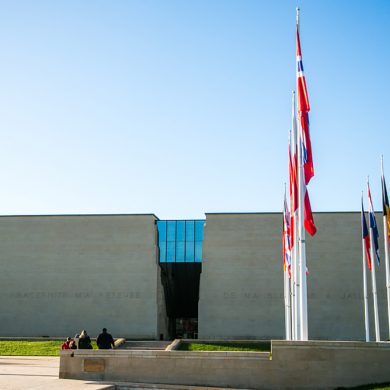Updated on 28 July 2021
Reading time: 6 minutes
As destinations go, Caen has a lot going for it. Just ten minutes from the port of Ouistreham and two hours from Paris, the city is accessible, full of history and, what’s more, has made a name for itself of late as a foodie destination. My friends and I headed there for the weekend and enjoyed a segway tour with a difference…
A Hub for history and food
William the Conqueror’s city is home not only to medieval gems like Caen Castle and the Men’s and Women’s Abbeys, but also to the Mémorial de Caen, a vast museum dedicated to the Battle of Normandy and the history of war in the 20th century. However, what many people may not know is that Caen has become a foodie hotspot in recent years. Home to no fewer than three Michelin-starred restaurants, this city is packed to the brim with great places to dine out and shops selling Normandy produce, catering to students, locals, tourists and foodies alike. So impressive is the city’s culinary offering that in 2016 it launched Novembre Gourmand, a city-wide food festival that now takes place every November.
Exploring on two wheels
Curiosity piqued, my friends and I found ourselves in Caen for the weekend, waiting at Caen Castle for a guided tour of the city with Com’on Gyro, a local company offering a wide array of tours including the one we’d chosen, which included a few historic sites and a foodie stop-off.
Segway tours are a great way of exploring a city, not least because they let you cover a whole lot more ground than you could on foot. They’re also great fun to manoeuvre once you get the hang of them! We are met outside the castle by guides David and Clément, who give us our safety briefing and a tutorial on how to start, stop and steer our segways. The castle grounds prove the perfect place to practise, and after a few minutes we’re feeling confident enough to take on Caen.
We get on our way, sailing down the slope from the castle and under what would have been the old drawbridge, before turning onto one of Caen’s main shopping streets, Rue Saint-Pierre. The city centre was badly bombed during the Battle of Normandy and many of the buildings along here are post-war constructions, made of the famous Caen stone from nearby quarries. Incidentally, the Tower of London is made from this same stone! A few older buildings have miraculously survived, and my favourite has to be a red half-timbered one which stands haphazardly between two more modern buildings.
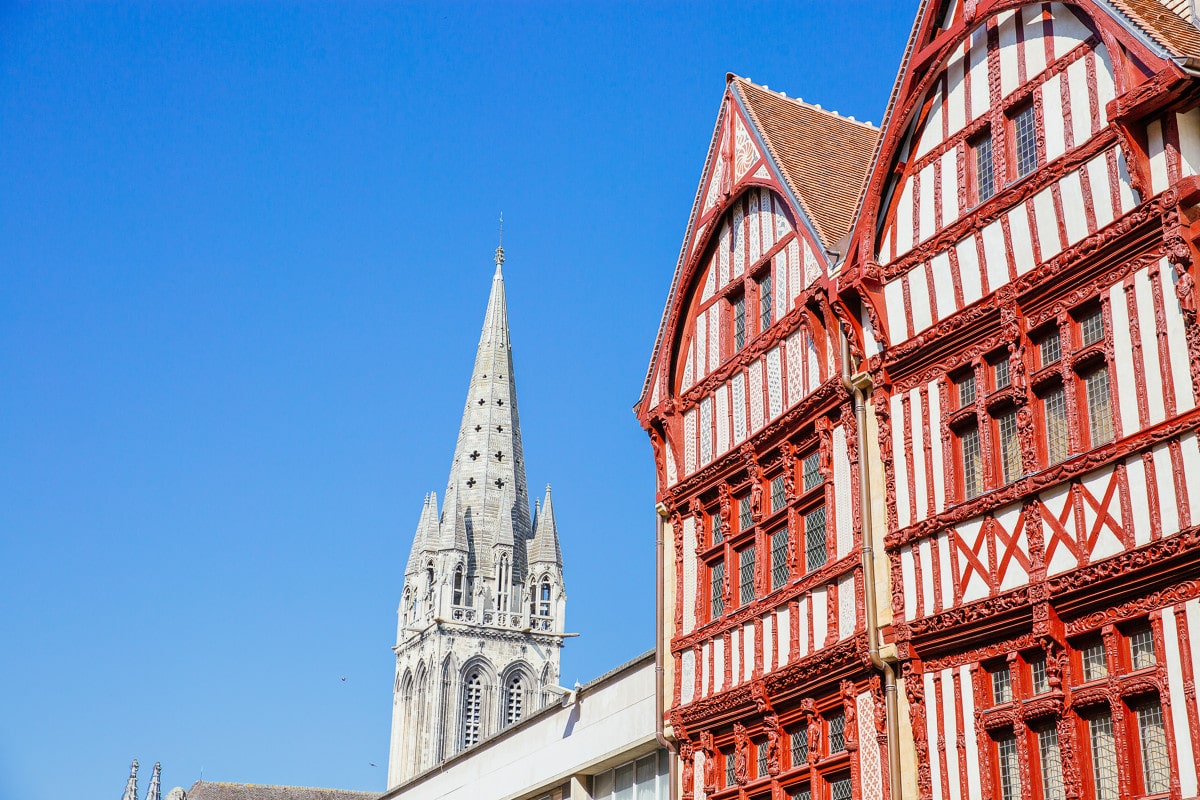
We continue down the street to the Hôtel de Ville (Caen’s town hall) and the Church of Saint-Etienne, which together make up the imposing Men’s Abbey. Arguably Caen’s most important medieval site, this abbey was originally built in 1066, but was rebuilt in both the 16th and 18th centuries. The abbey church is home to William the Conqueror’s tomb, which is given all due pomp in front of the altar. Unfortunately, David tells us, the tomb was looted several times and the king’s remains were scattered once it was realised that his tomb did not contain any treasure. Any remains that were recovered were then destroyed during the French Revolution and, according to one account, thrown into the River Orne that runs through Caen. A single thigh bone did survive, however, and sits in the tomb, covered by a marble slab. It was placed there in 1987 to mark the 900th anniversary of William’s death.
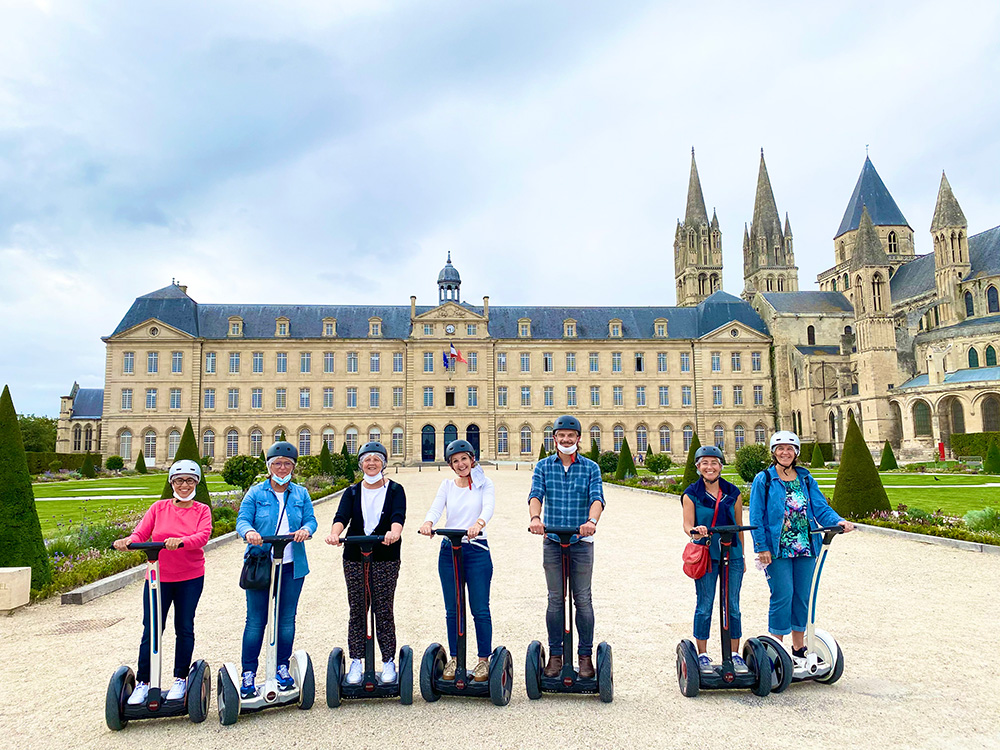
After visiting the stately Hôtel de Ville and its velvet-clad hall (now used for wedding ceremonies), we step out into the cloisters of the main abbey, and look up at the two towers situated towards the back of the church. The Men’s Abbey acted as a refuge for thousands of locals during the Battle of Caen in 1944, and to prevent the abbey from being bombed by Allied troops, they hung a large flag with a red cross on the roof. Legend has it that if these towers were to fall, then so too would England, David tells us. Luckily they didn’t, although the same can’t be said of the Church of Saint-Etienne le Vieux across the road, which was hit by a shell during the battle and was left in its ruined state after World War II.
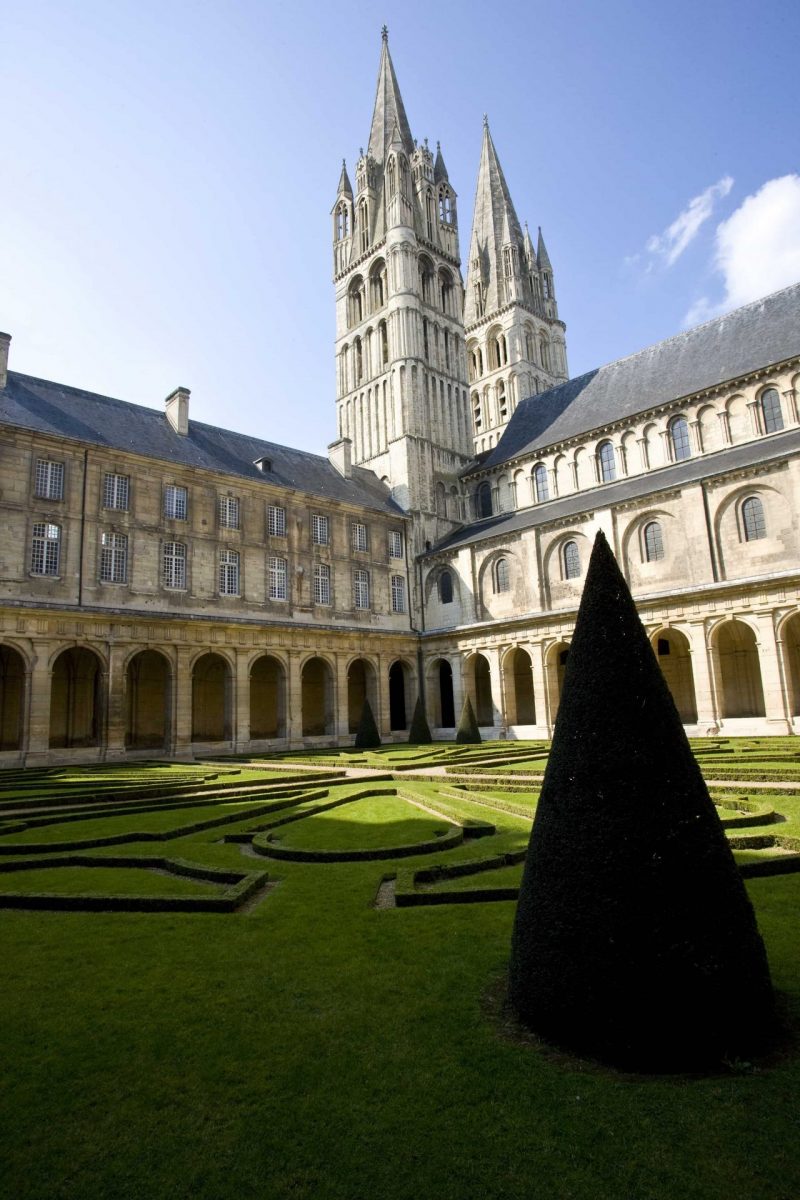
Moving on from the Men’s Abbey, we head past the grand Ancien Palais de Justice building on our left and onto the Place Saint-Sauveur. This immense square hosts Caen’s popular Friday morning market which, thanks to the city’s proximity to the coast, is renowned for its fresh fish and seafood, not to mention its delicious Normandy cheese and local artisanal produce. The square is also home to the Christmas market throughout December, David tells us, where you can try delicious treats like mulled Normandy cider and teurgoule, Normandy’s version of rice pudding. I feel hungry all of a sudden.
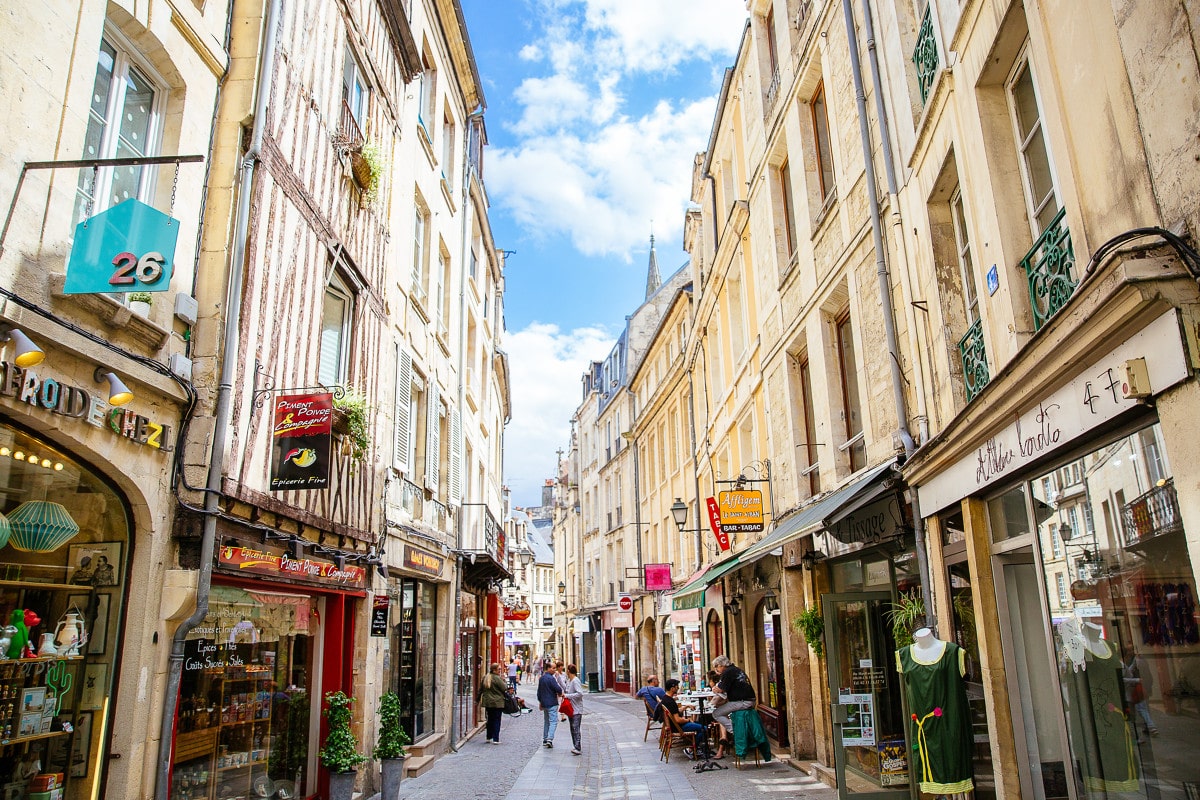
Not long until our next stop though, as we turn right onto a pretty street in the old quarter of Caen. Clément tells us that this street was named ‘Rue Froide’ because it was apparently the street down which William the Conqueror had Queen Matilda tied to a horse by her hair and dragged kicking and screaming after he found out that she had been unfaithful. She was treated with indifference by the street’s inhabitants, which led her to comment on what a ‘cold street’ it was. Although, Clément added, it could also just have been because the street is a wind tunnel!
We all agree that we prefer the first story as David and Clément lead us into a shop specialising in Normandy products like calvados apple brandy, cider, locally-brewed beer, regional cheeses and Isigny caramels. Laid out on tables waiting for us are glasses of wine, crusty slices of bread slathered in Camembert and terrine, and freshly-baked cakes. We are also treated to a snifter of calvados and a refreshing glass of pommeau, Normandy’s local liqueur made with cider apple juice and calvados.Tchin!**
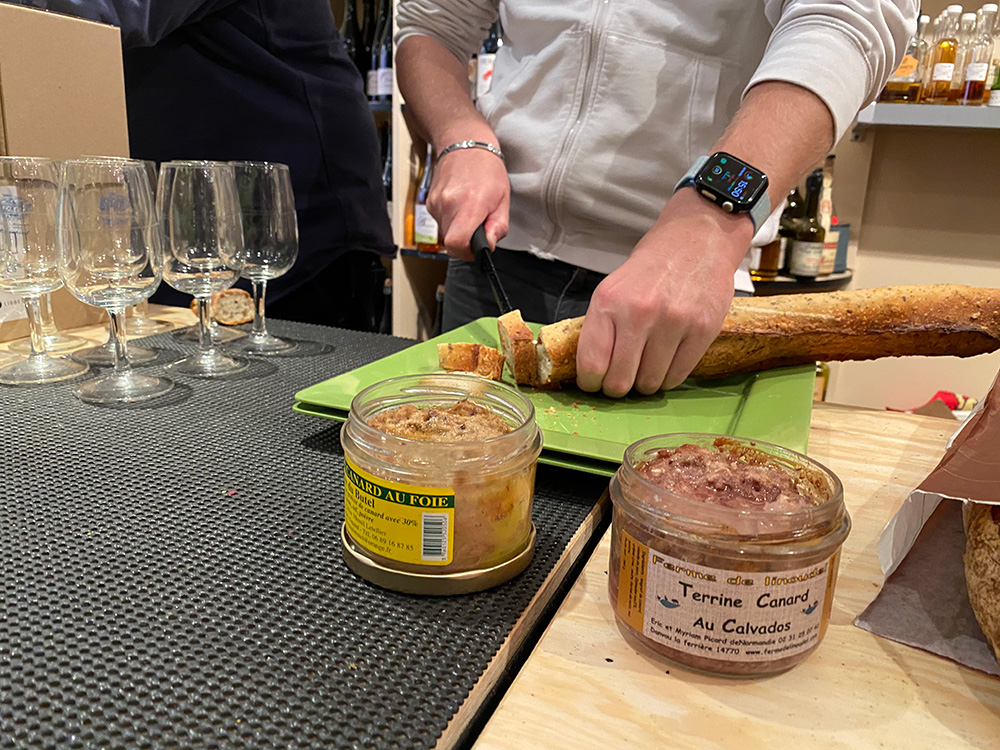
© Com’on Gyro 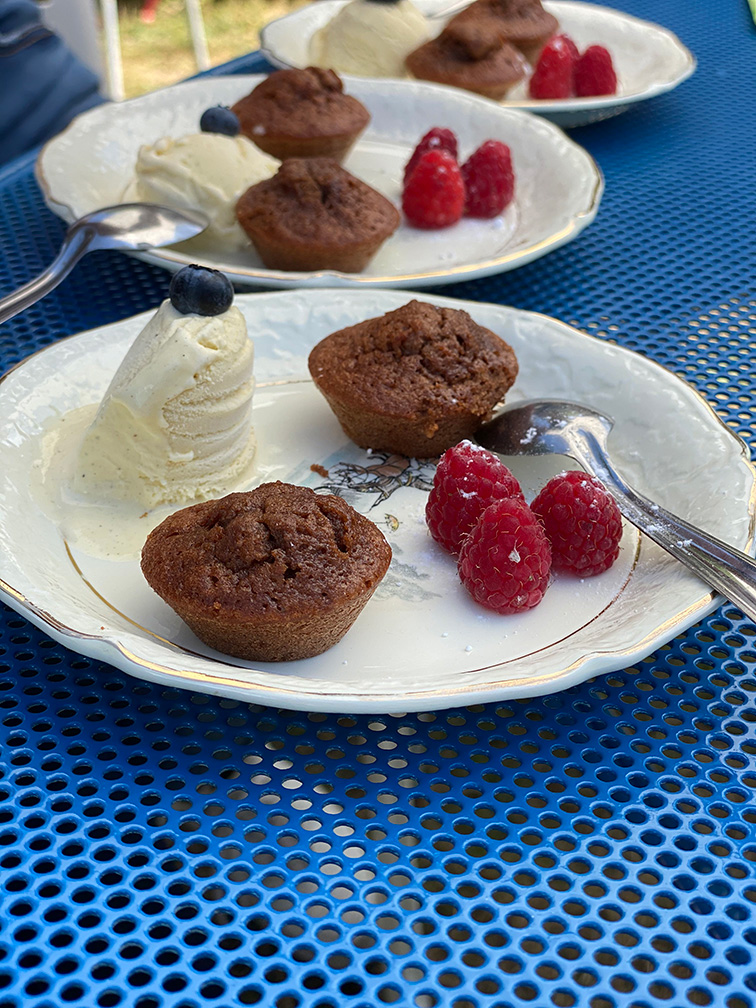
© Com’on Gyro 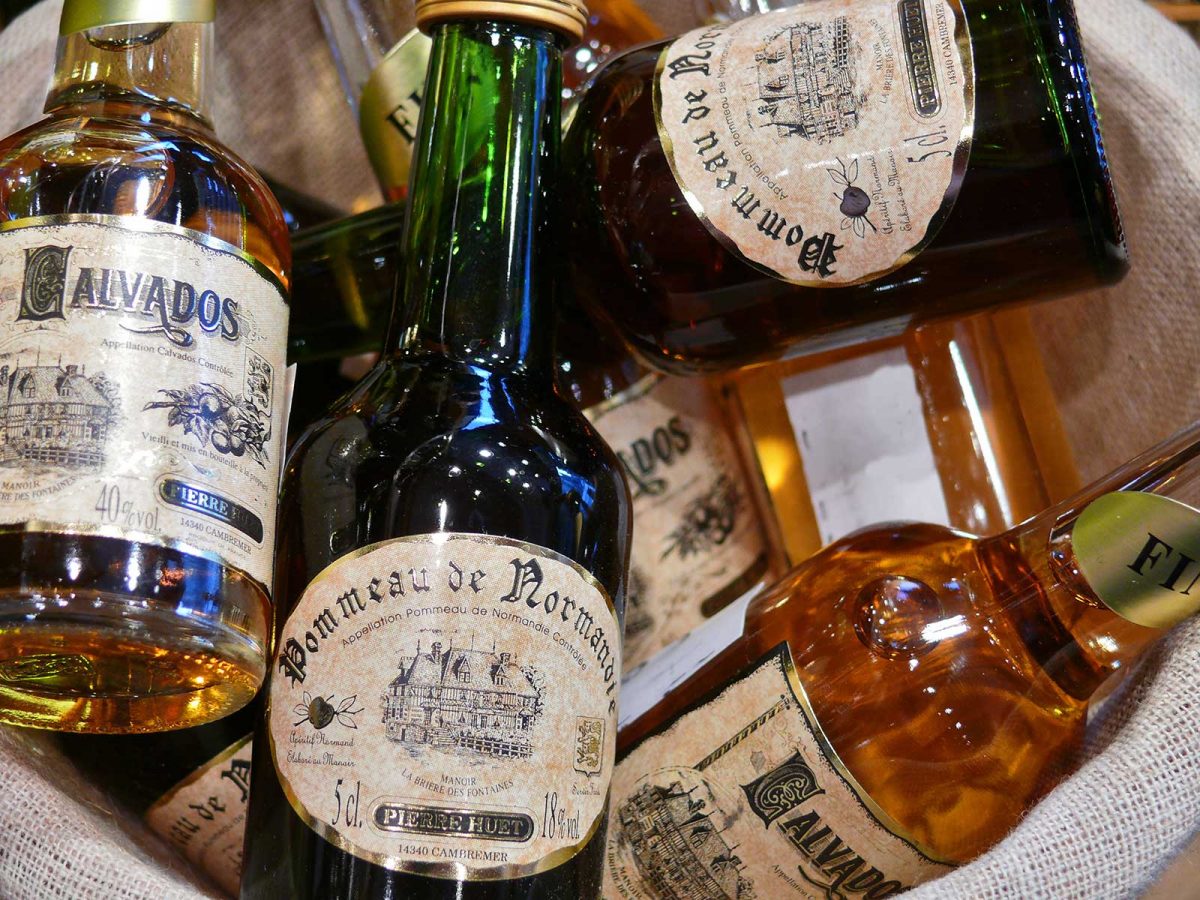
© Calvados Tourisme
After a lovely time spent discussing, trying and buying Normandy products, we head back to Caen Castle with David and Clément, stomachs considerably fuller, and say our goodbyes. Quite how we’d manage to eat dinner later was beyond us, but one thing we did know was that we’d definitely be recommending a weekend in Caen and Com’on Gyro‘s segway tours to our friends!
* Covid-19: Please follow local government guidelines in your country before making any travel plans *
Useful information
Com’on Gyro
+33 (0)6 82 25 19 38 (mobile)
comongyro.fr
Prices
Prices range from €15 to €45 per person for a tour
The foodie tour of Caen costs €39 per person
Group prices available on request

